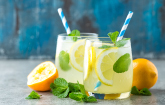NAPA, Calif., Jan. 19, 2022 /PRNewswire/ -- Silicon Valley Bank (SVB), the bank of the world's most innovative companies and their investors, today released its 2022 State of the Wine Industry Report. The 21st edition of the annual report assesses current conditions in the wine industry and provides a unique forecast for the year ahead based on proprietary research and economic and behavioral trends among consumers.
While premium wine companies led the industry with the best sales growth since 2007 – and nearly 30% of wineries described 2021 as their best year in history – the US wine industry as a whole experienced a decline in sales volume and failed to take advantage of the tailwind of businesses reopening as COVID restrictions loosened.
SVB will host a live videocast with SVB Wine Division founder Rob McMillan to discuss the annual report and state of the wine industry on January 19, 2021 at 9:00 a.m. PST with Amy Hoopes, Chief Strategy and Growth Officer, The Wine Group; Paul Mabray, CEO, Pix; and Danny Brager, Owner, Brager Beverage Alcohol Consulting. Register for the live event here. A replay of the discussion will be available after the event.
Highlights and predictions from the 2022 wine industry conditions survey and report:
- Premium wine sales were positively impacted by several one-time events during reopening in 2021, which will lead to another good year for premium wine in 2022, but at lower growth rates.
- Attracting younger, health-conscious, multi-cultural consumers to the wine industry will continue to be a challenge, especially as these consumers increasingly choose spirits, beer and spiked seltzers over wine, and as older core wine consumers age.
- In the West, the impact of drought will likely become a focal point of industry discussions and planning in 2022. With increasing climate impacts from drought, fire, low soil moisture and record low reservoir levels, there will be even more pressure to manage this shared and increasingly scarce resource.
- The restaurant industry will continue to decline as a sales channel for wine due to overpricing on the menu and consumers who value other alcoholic beverages over wine. Restaurants will find that wine is not in demand at the prices charged and that maintaining deep stocks of wine is not worth the cost.
Supply
- When 2021 totals are calculated, we forecast that California will have crushed 3.6 million tons, which would be a second small harvest in a row. Washington and Oregon also reported smaller-yielding vintages, but across the West, the quality of the harvest was reported as excellent. New York and Virginia began the season with perfect conditions, but Hurricane Ida impacted the eastern states.
- Supply in the West is largely balanced in early 2022, but low levels of demand suggest that some acres of vines will still need to be removed in California and Washington to sustain the balance, particularly if volume sold continues to dip.
- There was less bulk on the market at the end of 2021 compared to 2020, but buying behavior was sporadic. Grape and bulk prices have stabilized at lower levels than we've seen in the past five years for California.
Demand
- While baby boomers are still purchasing at higher price points, demand for wine will be slack as the median baby boomers hits normal retirement age in 2022 and younger consumers continue to prefer alcoholic beverages other than wine.
- Online sales will continue to grow as an important part of direct to consumer (DTC) efforts and expand past its current share of 9 percent of an average winery's sales.
- Supply chain issues are expected to gradually ease through the year but will have an impact on individual wineries in their own production capacities.
Price
- Forty-two percent of survey respondents said they will make a small bottle-price increase in 2022. Given the higher costs of production in a modest inflationary environment, we should see wide instances of modest price increases. Napa and Northern Oregon will see more moderate price increases.
- Vineyards and land retained their values in 2021. As the Federal Reserve raises interest rates, we anticipate the heated demand for high-end vineyards and wineries will slow.
- Inflation will impact product delivery, transportation costs, labor and supplies well into 2022 and add pressure on wine sellers to increase prices.
Climate Impacts
- The cost to obtain insurance is a critical issue related to climate change. Given the billions lost to wildfires over the past several years in the West, insurance companies have been applying new risk mitigation measures and using technology to update wildfire risk maps. Over 70 percent of those surveyed this year said their insurance costs increased. Eight percent of respondents were unable to obtain insurance in 2021, and another 27 percent said they couldn't obtain sufficient coverage.
- Water could become the most important discussion topic in the year ahead, depending on the amount of rain and snow the West receives in the winter and spring of 2022. Only 2 percent of survey respondents said they were confident they had abundant water sources, while 43 percent said they were very concerned about the potential for serious shortages.
"The wine industry overcame numerous hurdles to achieve a hard-earned, solid year of sales. That said, looking at the long-term trends, this year reveals issues with both consumer demand and the ongoing climate crisis that may impact business conditions for the industry in the years to come," said Rob McMillan, founder of Silicon Valley Bank's Wine Division and author of the report.
"The lesser interest in wine among younger consumers, coupled with the encroaching retirement and decreasing wine consumption of wine-loving baby boomers, poses a primary threat to the business. In addition, more frequent drought, fires and hurricanes – triggered by climate change – will have a trickle-down affect across the industry, impacting everything from harvest to insurance. The wine industry has to consider these issues seriously, as the negative consequences are increasingly evident."
As we move into 2022, SVB is committed to help identify solutions to mitigate the headwinds facing the industry and is pleased to announce the formation of the Wine Research and Marketing Project (WineRAMP). WineRAMP is an industry group supported by wineries, distributors, importers, vendors and SVB to build and enhance the image of wine in the US marketplace and promote the positive attributes of wine to current and new legal-age consumers. The group will invest in and work directly with other wine organizations on research and joint marketing campaigns and is already working to secure USDA approval for a National Research & Promotions Order. Learn more about WineRAMP at https://wineramp.org/.
Read the full 2022 State of the Wine Industry report here: www.svb.com/trends-insights/reports/wine-report
Silicon Valley Bank's Wine Division
Founded in 1994, SVB's Wine Division offers financial services and strategic advice to premium vineyards and wineries. With one of the largest banking teams in the country dedicated to the wine industry, SVB's Wine Division has offices in Napa, Sonoma and Portland, and primarily serves clients in the fine wine producing regions along the West Coast of the United States. Learn more at https://www.svb.com/industry-solutions/premium-wine-banking.
About Silicon Valley Bank
Silicon Valley Bank (SVB) helps innovative companies and their investors move bold ideas forward, fast. SVB provides targeted financial services and expertise through its offices in innovation centers around the world. With commercial, international and private banking services, SVB helps address the unique needs of innovators. Learn more at svb.com. [SIVB-C]
This material, including without limitation to the statistical information herein, is provided for informational purposes only, and has been derived from information excerpted from the 2022 State of the Wine Industry report.
Silicon Valley Bank is not selling or distributing wine or wine-related products. Silicon Valley Bank provides banking and financial services, along with industry insights to Vineyards and Wineries. Silicon Valley Bank is not responsible for (or a participant in) the sales of any wineries' products in any fashion or manner and makes no representations that any promotion or sales of alcoholic beverages will or will not be conducted in a lawful manner. Further, Silicon Valley Bank disclaims any responsibility or warranty for any products sold by wineries or other wine industry service providers. All wineries, and non-SVB named companies listed are independent third parties and are not affiliated with SVB Financial Group.
© 2022 SVB Financial Group. All rights reserved. Silicon Valley Bank is a member of the FDIC and the Federal Reserve System. Silicon Valley Bank is the California bank subsidiary of SVB Financial Group (Nasdaq: SIVB). SVB, SVB FINANCIAL GROUP, SILICON VALLEY BANK, MAKE NEXT HAPPEN NOW and the chevron device are trademarks of SVB Financial Group, used under license.
SOURCE Silicon Valley Bank

WANT YOUR COMPANY'S NEWS FEATURED ON PRNEWSWIRE.COM?
Newsrooms &
Influencers
Digital Media
Outlets
Journalists
Opted In





Share this article